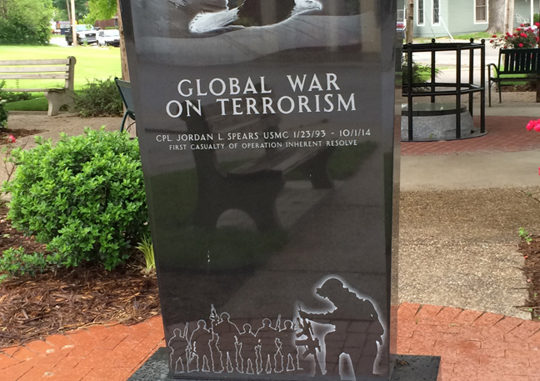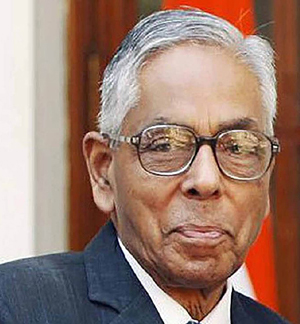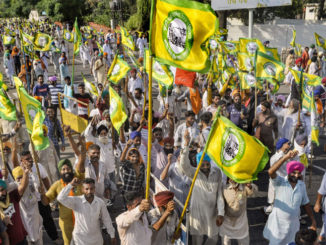
Notwithstanding some temporary setbacks, the broad contours of terrorism remain much the same

“Two decades of the Global war on terror did not, however, eradicate terrorism. Notwithstanding leadership losses, including that of leaders like bin Laden and al Baghdadi, and despite organizational fracturing and territorial degradation, terror groups such as al-Qaeda and the IS today pose a persistent challenge. Hard intelligence on the myriad terror modules has been hard to come by and the absence of a single core for either al- Qaeda or the IS, is making it even more difficult to assess the true nature of the threat that looms. It would be tempting for intelligence agencies to think that the current low-tech attacks, involving small arms, the occasional use of Improvised Explosive Devices, and random ‘lone wolf’ attacks reflect the weakening of terror modules, including that of al-Qaeda and the IS. Nothing could be more misleading. Not only the major terror groups but even smaller terror modules currently retain the potential for both sophisticated and mass casualty attacks.”
Two decades after September 11, 2001, when al-Qaeda carried out its most audacious attacks ever on American soil, leading to the Global war on terror and triggering the invasion of Afghanistan by the United States, it might be worthwhile to do a fact check on the outcome. More so given the latest turn of events, which has seen the return of the Taliban in Afghanistan, leading to the question as to whether the Global war on terror was a failure. Also, are there lessons to be learnt from it?
A perspective
In retrospect, it is possible to surmise that the 9/11 attacks were the sum total of a series of systemic and structural shortcomings of the U.S. security establishment. Seldom mentioned, it was also, perhaps, the failure of human imagination. No one in the U.S. establishment imagined that an attack on this scale could take place. It is unclear whether even today security agencies in the U.S. and elsewhere are better positioned in this respect.
Historians surmise that Osama bin Laden’s actions were inspired as much by geopolitical as they were by religious objectives, and that he was obsessed by the ‘sufferings of Muslims’ in many far-flung regions. He believed — mistakenly — that delivering a decisive blow against the U.S. by an action such as 9/11 would force the U.S. to alter its policies in many areas of conflict.
Osama bin Laden failed to succeed in his attempt, and over time it was al-Qaeda that faced the wrath of not only the U.S., but the rest of the world as well. Osama bin Laden’s aims to destroy the ‘myth of American invincibility’ failed, but since then, the world has witnessed prolonged periods of uncertainty as also the spawning of many more terror groups worldwide. The Global war on terror did, however, neutralize fears that terrorism was poised to create large-scale mayhem across the globe.
Several reasons could be attributed to bin Laden’s failure. It would seem, in hindsight, that bin Laden and other leaders associated with al-Qaeda such as Ayman al-Zawahiri, other jihadi leaders such as Abu Bakr al-Baghdadi of the Islamic State (IS) or Mukhtar Abu Zubair of Al-Shabab, all lacked the centrality of vision or power so essential to sustain the momentum of an initiative of this kind. Moreover, while in the initial stages, Afghanistan — and to an extent, Pakistan — provided safe havens (which together with the presence of several disparate terror groups in a common milieu provided powerful unifying forces for disparate groups), the situation changed once the safe havens were no longer available. In addition, the lack of visibility of the leaders of the movement over time and diminished authority also contributed to dissipation of the terror momentum and the capacity for militancy and violence.
Persistent challenge
Two decades of the Global war on terror did not, however, eradicate terrorism. Notwithstanding leadership losses, including that of leaders like bin Laden and al Baghdadi, and despite organizational fracturing and territorial degradation, terror groups such as al-Qaeda and the IS today pose a persistent challenge. Hard intelligence on the myriad terror modules has been hard to come by and the absence of a single core for either al- Qaeda or the IS, is making it even more difficult to assess the true nature of the threat that looms. It would be tempting for intelligence agencies to think that the current low-tech attacks, involving small arms, the occasional use of Improvised Explosive Devices, and random ‘lone wolf’ attacks reflect the weakening of terror modules, including that of al-Qaeda and the IS. Nothing could be more misleading. Not only the major terror groups but even smaller terror modules currently retain the potential for both sophisticated and mass casualty attacks. History is, therefore, more relevant and important when assessing future threats such as terrorism. The broad sweep acquired by radical Islam in recent decades has, by no means, been eliminated. Terrorism, stemming from a mixture of religious fervor and fundamentalist aims, remains vibrant. The newer breed of terrorists may be less familiar with the teachings of the Egyptian, Sayyid Qutb or the Palestinian, Abdullah Azzam, but they are well-versed in the practical methodologies practicedby the Jalaluddin and Sirajuddin Haqqanis (the latter is a Minister in the Interim Afghan Government), Hafiz Saeed of the Lashkar-e-Taiba (LeT) and Maulana Masood Azhar of the Jaish-e-Mohammed (JeM), etc. Hence, it is possible to surmise that notwithstanding some temporary setbacks caused by the Global war on terror, the broad contours of terrorism, especially Islamist terrorism, remain much the same.
A grim warning
The return of the Taliban in Afghanistan, after humiliating the combined forces of the U.S., the North Atlantic Treaty Organization (NATO) and the Afghan Armed Forces is a grim warning of what lies in store for the neighborhood. Apart from giving radical Islam a fresh lease of life and a new thrust, it has come at a time when the democratic world is demonstrating a diminishing appetite to fight terror away from their own ‘locales’, thus leaving the field wide open to the forces of Terror Inc., of which the Taliban is an indispensable entity. Several terror groups which possess varying capabilities such as al-Qaeda, the IS, the Daesh across Asia, the LeT, JeM and the TRF (The Resistance Front, which is backed by the LeT) in India, the Al-Shabab in Africa, etc., are certain to feel energized and gain a fresh lease of life.
In India
One can already see emerging signs of what can be expected in Afghanistan given that its capital, Kabul, has been wracked by a series of bomb blasts, reflecting a more intensified intra-denominational strife which has the potential to become a ‘prairie fire’. Nearer home, Kashmir is beginning to see a new wave of terror attacks reviving grim memories of the 1990s. Targeted killings of minorities have begun to send shockwaves across not only Jammu & Kashmir (J&K), but many other pockets of the country. Given the prevailing scenario, the dice is heavily loaded against India, with J&K being in the cross-hairs of several terror factions, further complicated by Pakistan’s efforts to aid and abet them through the use of its ‘regulars’. That Sirajuddin Haqqani, a Pakistani acolyte, holds a key position in the new interim Government of Afghanistan, makes it easier for forces inimical to India in the region, essentially Pakistan, to wage an ‘undeclared war’ against India.
While the past is often a good guide to the future in comprehending what shape terror could manifest itself going forward, it is even more important to recognize the paradigmatic changes beginning to take shape in the practice of violence in different parts of the world. The emerging shape of terror and terror attacks during coming periods is likely to be very different from what many of today’s experts possibly anticipate. While ‘Zero-day’ attacks like New York (9/11) and Mumbai (26/11) are still very much on the drawing board of terror groups, it is also known that a new breed of terrorists is experimenting with newer forms of terror, especially the possibility of ‘enabled or remote-controlled terror’. This is a frightening prospect.
The forms of ‘new era’ terror
Intelligence and terror specialists must begin to anticipate how to deal with ‘new era terrorists’, recruited over the Internet, who would thereafter be guided through different steps, over a sustained period, by anonymous handlers located elsewhere. This is not science fiction. There is already evidence of the existence of remote controllers who choose the targets, the actual operatives, the nature of the attack itself, and even the weaponry to be used, operating behind a wall of anonymity. Internet-enabled terrorism — a completely new genre of terrorism — would be very different from what we have seen so far.
Linked to this is the threat posed by cyber-terrorism. Digital sabotage has already entered the armory of certain terror groups. Cyber sabotage is a distinct possibility in certain situations today. It is well-known that terror groups that have state backing, have the capacity today to employ cyber techniques to carry out hostile attacks on the ICT-enabled infrastructure of another country. While little is talked about these aspects, the reality is that the limits of human imagination have become the virtual parameters of terror threats today.
(The author is a former National Security Adviser and a former Governor of West Bengal)





Be the first to comment